A uniform rod of mass m and length l rests on a smooth horizontal surface. One of the ends of the rod is struck in a horizontal direction at right angles to the rod. As a result the rod obtains velocity v0. Find the force with which one-half of the rod will act ont he other in the process of motion.
To solve the problem, we need to analyze the motion of the uniform rod after it is struck. Here’s a step-by-step breakdown of the solution:
Step 1: Understand the motion of the rod
When one end of the rod is struck, it begins to move with a linear velocity v0 while also rotating about its center of mass. The rod can be considered to be made up of two halves, each with mass m2.
Step 2: Determine the relationship between linear and angular velocity
The linear velocity v0 at the end of the rod is related to the angular velocity ω by the equation:
v0=ω⋅l2
This is because the distance from the center of mass to the end of the rod is l2.
Step 3: Calculate the impulse
The impulse experienced by the rod when it is struck is equal to the change in momentum. Since the initial velocity is zero, the impulse J can be expressed as:
J=mv0
Step 4: Calculate the impulsive angular momentum
The impulsive angular momentum about the center of mass can be expressed as:
L=I⋅ω
where I is the moment of inertia of the rod about its center of mass. The moment of inertia I for a uniform rod about its center is given by:
I=ml212
Step 5: Relate angular momentum to impulse
The angular momentum can also be expressed in terms of the impulse:
L=J⋅l2
Setting the two expressions for angular momentum equal gives:
mv0⋅l2=ml212⋅ω
Step 6: Solve for angular velocity
From the equation above, we can cancel m (assuming m≠0) and rearrange to find ω:
v0l2=l212⋅ω
ω=6v0l
Step 7: Calculate the force between the two halves of the rod
The force exerted by one half of the rod on the other can be calculated using the centripetal force experienced by the rotating halves. The force F can be expressed as:
F=m2⋅v2r
where r is the distance from the center of mass to the point of interest. For the center of mass of one half, r=l4, and the velocity at this point is:
v=ω⋅l4=6v0l⋅l4=3v02
Substituting this into the force equation gives:
F=m2⋅(3v02)2l4=m2⋅9v204l4=9mv202l
Final Answer
Thus, the force with which one-half of the rod acts on the other is:
F=9mv202l
When one end of the rod is struck, it begins to move with a linear velocity v0 while also rotating about its center of mass. The rod can be considered to be made up of two halves, each with mass m2.
The linear velocity v0 at the end of the rod is related to the angular velocity ω by the equation:
v0=ω⋅l2
This is because the distance from the center of mass to the end of the rod is l2.
The impulse experienced by the rod when it is struck is equal to the change in momentum. Since the initial velocity is zero, the impulse J can be expressed as:
J=mv0
The impulsive angular momentum about the center of mass can be expressed as:
L=I⋅ω
where I is the moment of inertia of the rod about its center of mass. The moment of inertia I for a uniform rod about its center is given by:
I=ml212
The angular momentum can also be expressed in terms of the impulse:
L=J⋅l2
Setting the two expressions for angular momentum equal gives:
mv0⋅l2=ml212⋅ω
From the equation above, we can cancel m (assuming m≠0) and rearrange to find ω:
v0l2=l212⋅ω
ω=6v0l
The force exerted by one half of the rod on the other can be calculated using the centripetal force experienced by the rotating halves. The force F can be expressed as:
F=m2⋅v2r
where r is the distance from the center of mass to the point of interest. For the center of mass of one half, r=l4, and the velocity at this point is:
v=ω⋅l4=6v0l⋅l4=3v02
Substituting this into the force equation gives:
F=m2⋅(3v02)2l4=m2⋅9v204l4=9mv202l
Thus, the force with which one-half of the rod acts on the other is:
F=9mv202l
Topper's Solved these Questions
- ROTATIONAL MECHANICSBOOK - DC PANDEY ENGLISHCHAPTER - ROTATIONAL MECHANICSEXERCISE - Level 2 Subjective
36 Videos
- ROTATIONBOOK - DC PANDEY ENGLISHCHAPTER - ROTATIONEXERCISE - (C) Chapter Exercises
39 Videos
- ROTATIONAL MOTIONBOOK - DC PANDEY ENGLISHCHAPTER - ROTATIONAL MOTIONEXERCISE - Integer Type Questions
17 Videos
Similar Questions
A uniform rod AB of mass m and length l at rest on a smooth horizontal surface . An impulse P is applied to the end B. The time taken by the rod to turn through a right angle is :
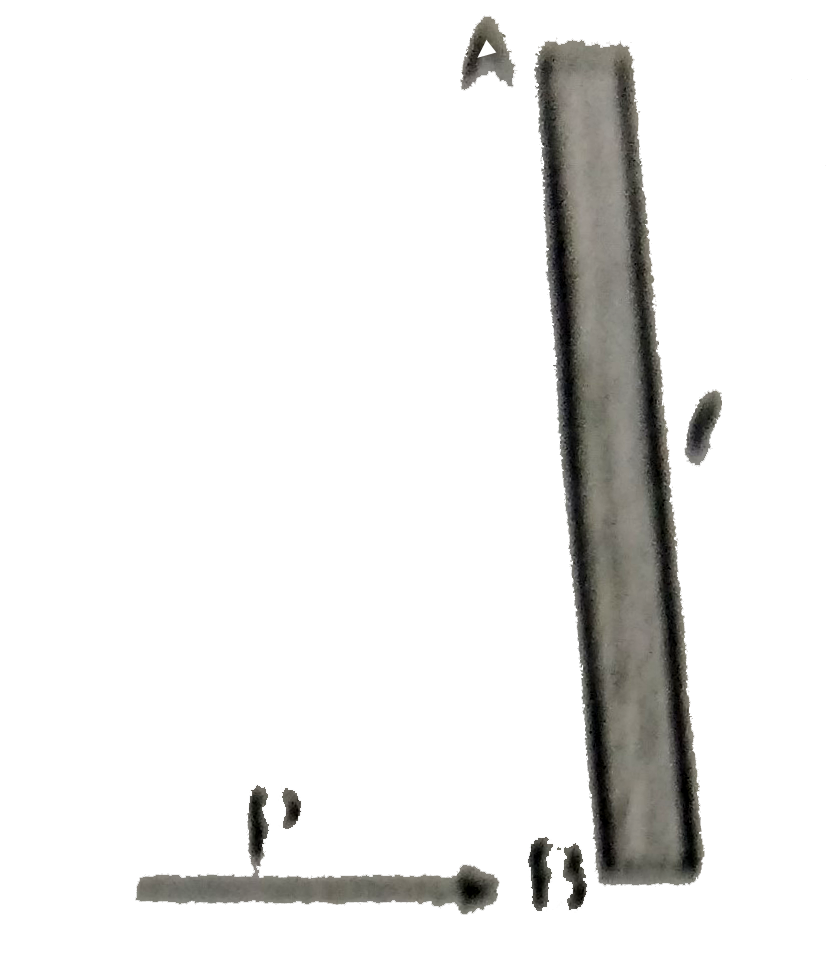
View SolutionA uniform rod AB of mass m and length l at rest on a smooth horizontal surface . An impulse P is applied to the end B. The time taken by the rod to turn through a right angle is :

View SolutionA uniform rod of mass m, length l rests on a smooth horizontal surface. Rod is given a sharp horizontal impulse p perpendicular to the rod at a distance l/4 from the centre. The angular velocity of the rod will be
View SolutionA uniform rod of mass M and length L, area of cross section A is placed on a smooth horizontal surface. Forces acting on the rod are shown in the digram

Total elastic potential energy stored in the rod is :
View SolutionA uniform rod of mass m and length l is lying on a smooth table. An impulse J acts on the rod momentarily as shown in figure at point R. Just after that:
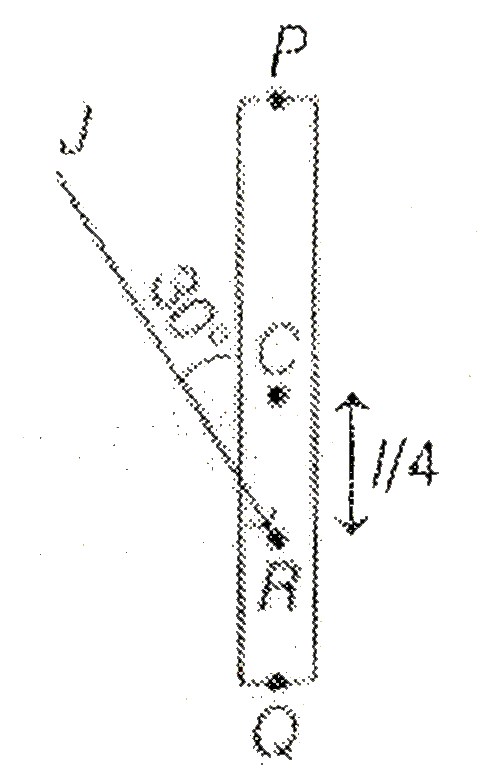
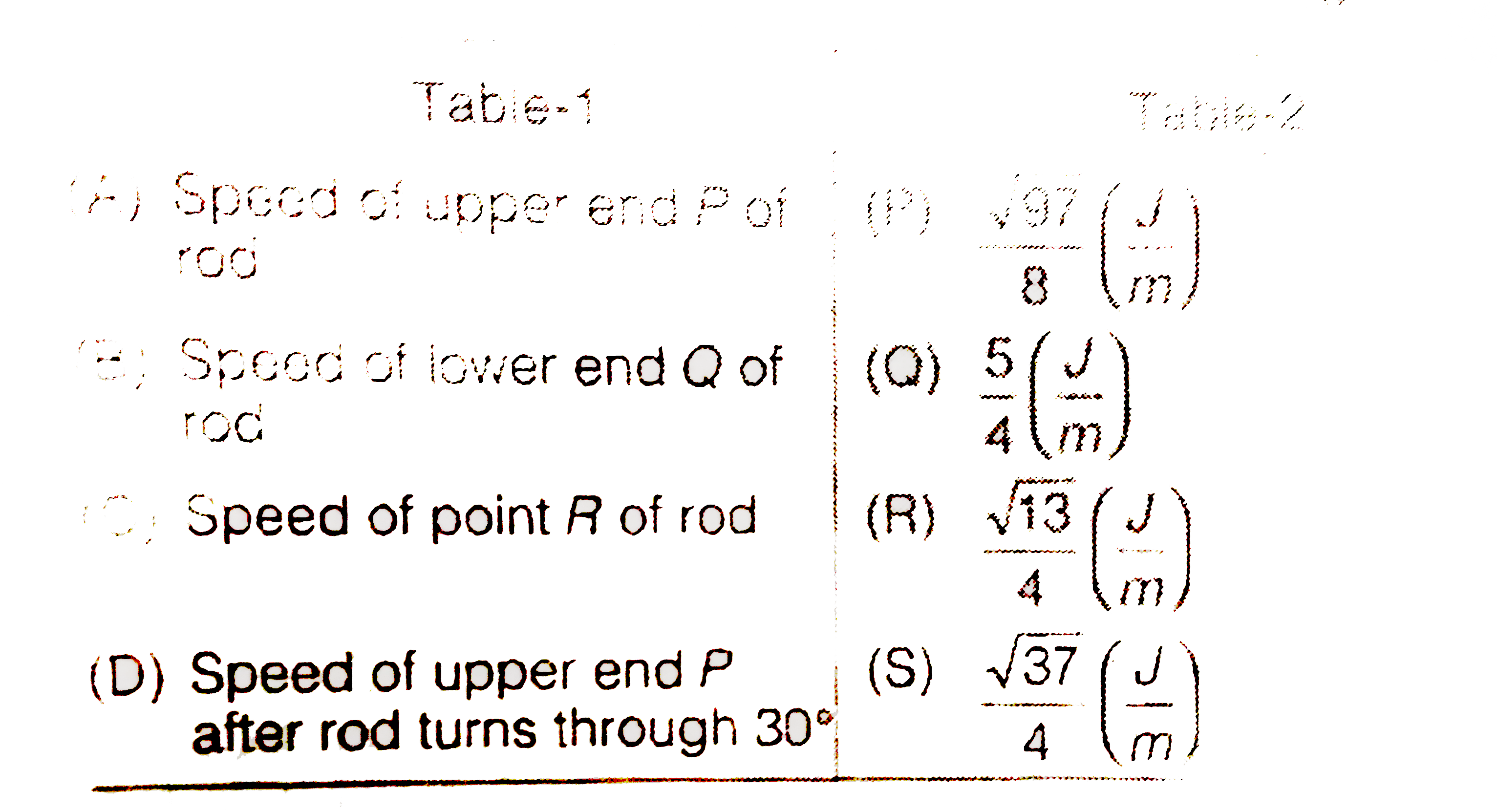
View SolutionA uniform rod of length l and mass 2 m rests on a smooth horizontal table. A point mass m moving horizontally at right angles to the rod with velocity v collides with one end of the rod and sticks it. Then
View SolutionA uniform rod of length l and mass 2 m rests on a smooth horizontal table. A point mass m moving horizontally at right angles to the rod with velocity v collides with one end of the rod and sticks it. Then
View SolutionA uniform rod of mass m=2kg and length l is kept on a smooth horizontal plane. If the ends A and B of the rod move with speeds v and 2v respectively perpendicular to the rod, find the:
a. angulr velocity of CM of the rod.
b. Kinetic energy of the rod (in Joule).
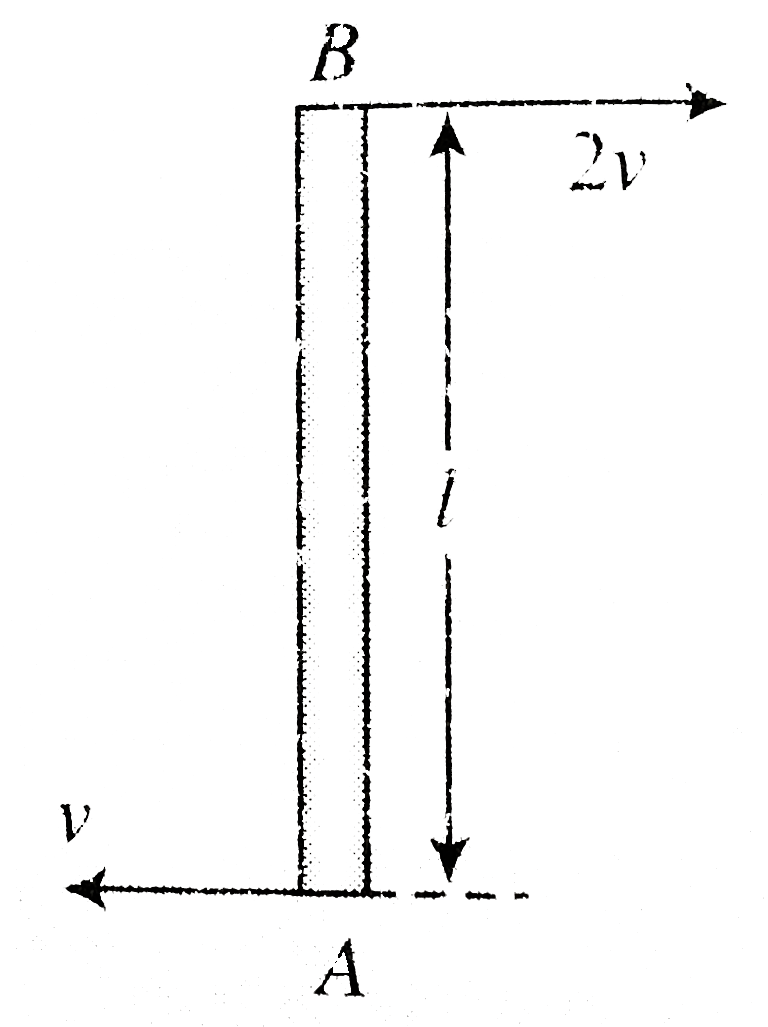
View SolutionA rod of mass m and length l is lying on a horizontal table. Work done in making it stand on one end will be
View SolutionA uniform rod of mass m and length L is at rest on a smooth horizontal surface. A ball of mass m, moving with velocity v0, hits the rod perpendicularly at its one end and sticks to it. The angular velocity of rod after collision is
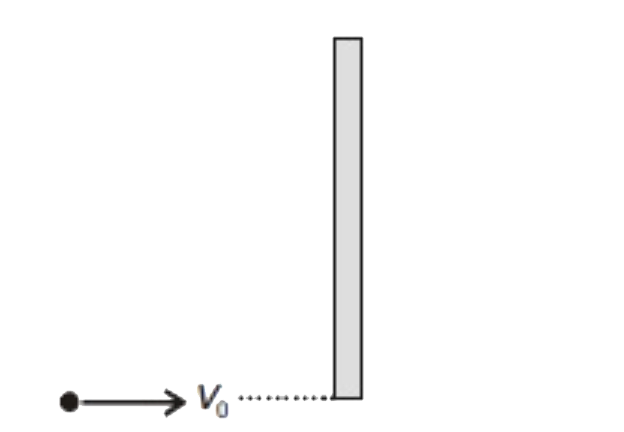
View Solution
